FREE Standard Shipping On All Orders $100 or More!*
Problems With Fiberglass Pools

Shopping for an in-ground swimming pool? You'd have three options generally, but if you're going to DIY build a swimming pool, you might rule out the more involved installation of a concrete pool and begin to look at the easier to install vinyl pool kits. Then you stumbled across fiberglass pool kits.
Most fiberglass pool owners will not have a problem with all of these issues, especially if they have the pool professionally installed. But these other issues make fiberglass pools less DIY friendly than our vinyl in-ground pool kits.
Structural Cracking
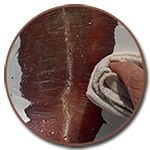
It's very rare, but because the fiberglass pool is a one-piece shell, it is forced to handle pressures and stresses across the entire pool. Situations where water runoff is not sufficiently engineered could cause big problems. Heavy pool decks that lose support and shift or sink can exert enormous force on the pool walls and floor, and small cracks or fissures could develop. This is also a problem for concrete pools, when conditions are right, including poor water runoff, creeping hillsides, or swampy or rocky soils. Cracks can be repaired, but it's a big job and guaranteed not to match exactly.
Check Cracking
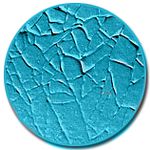
These are small, hairline cracks in the gelcoat, sometimes called spider cracking. Check cracks occur also in plaster pools and fiberglass surfaces, but for different reasons. Plaster that dries too quickly or is exposed to the elements during winter can develop these. They are more pronounced on a colored surface and less visible on white. Fiberglass pools can craze or check crack from imprecise manufacturing or when the surface is not fully supported, like under the steps or areas where the backfill is eroded. Gelcoat can also crack during transport and installation if it gets bumped around too much. It can even occur later in life; if you need to reset and re-level a fiberglass pool, the gelcoat can crack, just like a thin candy shell, from handling the new pressures.
Fading
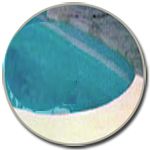
Vinyl liners can fade also, although new liners are more UV resistant than ever. The beauty of an in-ground vinyl pool is that you can easily and cheaply replace the liner if you have waterline fading or just want a change of pattern. You can replace your own in-ground pool liner during a weekend at a cost of under $1000, including supplies. But if you want to refurbish your entire fiberglass pool surface to remove fading, scratches, cracking, scaling and staining, you'd need to add another zero to the cost! A cheaper solution is to add a tile border around the water line, but that's only 10 percent of the surface. To resurface a fiberglass pool means to apply a new gelcoat, which is an expensive, long process that is not DIY friendly.
Floating
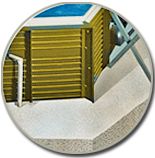
Our in-ground pool kits have a concrete foundation, what we call the Concrete Collar, poured around outside the base of the walls. This secures the walls and X-braces in place, keeping them level and permanently installed deep in the earth. The space around the outside of the pool walls is filled 10-12 inches deep in concrete and is 30 inches wide. That's a lot of heavy concrete that will keep these walls and the plumbing pipes solidly in place.
Fiberglass pools are hoisted in place, usually onto a bed of sand, and once leveled are backfilled either with sand or gravel. They are not really held in place with anything solid; they are set in place, pipes are connected, it's filled with water, and it's topped with a rim of concrete. If the ground soil around the pool is expansive, loamy or wet, and not backfilled properly, pressures can move these pools, especially if it is not kept full of water. For this reason, fiberglass pool owners may be encouraged to never drain their pools.
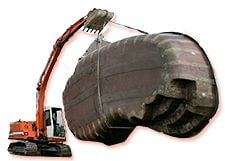
If you think about it, a fiberglass pool is like a boat shell, so of course it will float, if conditions are right. A vinyl pool has its walls permanently anchored deep into the earth.
I want to stress that there are thousands of professionally installed fiberglass pools without these problems, going 20 years before any serious surface repairs or shell replacement is needed. I'd also suggest the idea that the most DIY friendly in-ground swimming pool kit is a vinyl pool.
Read our many other articles on DIY pool installation and then give us a call to start working with you to create your dream pool!